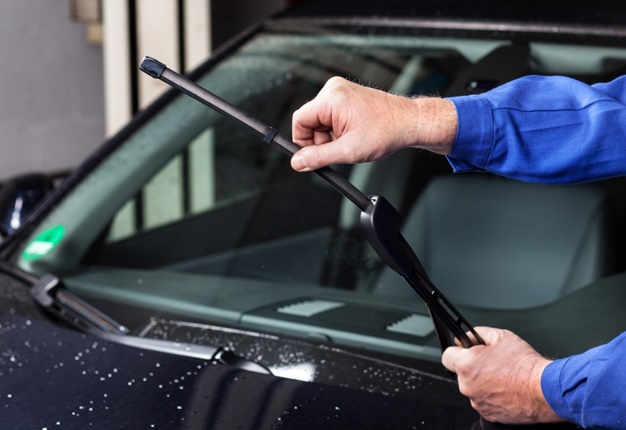
Cape Town - Earlier in July, Wheels24 reported that the South African Weather Services warned motorists travelling to KwaZulu-Natal to take extra care as heavy weather is expected along sections of the N3 Toll route.
News24 reported that heavy snow has affected large parts of the N3 Toll route on Sunday with many drivers caught out in the cold.
READ: Vehicle maintenance in SA: 7 essential checks
Johan Jonck, editor of Arrive Alive, says: "We urge people to listen to and obey travel advisories.
"Traffic congestion caused at Nottingham Road, KZN Midlands by public ignoring urgent appeals NOT to go snow watching. This puts tremendous pressure on emergency services already working under difficult conditions in the area."
If you are caught in snow or along icy roads here's what you should do: List by Arrive Alive
Road safety
• Start gently and slowly. Don't be in a hurry.
• Apply gentle, consistent turning and braking.
• Adjust your speed to road conditions. Don't be reckless and impatient.
• Maintain a safe following distance.
• Wet brakes can be weak, apply unevenly or fail to activate.
• Avoid driving through deep puddles or flowing water if possible.
Safe driving on icy roads
• Decrease your speed and leave yourself plenty of room to stop.
• Brake gently to avoid skidding. If your wheels start to lock up, ease off the brake.
• Turn on your lights to increase your visibility.
• Keep your lights and windshield clean.
• Use low gears to keep traction, especially on hills.
• Don't use cruise control or overdrive on icy roads.
• Bridges, overpasses and infrequently traveled roads will freeze first.
• Don't pass snow plows and sanding trucks.
• Don't assume your vehicle can handle all conditions.
PICS: Snow cause chaos on SA's roads
If your rear wheels skid
• Take your foot off the accelerator.
• Steer in the direction you want the front wheels to go.
• If your rear wheels start sliding the other way as you recover, ease the steering wheel toward that side.
• If you have standard brakes, pump them gently.
• If you have anti-lock brakes (ABS), do not pump the brakes. Apply steady pressure to the brakes.
If your front wheels skid
• Take your foot off the accelerator and shift to neutral, but don't try to steer immediately.
• As the wheels skid sideways, they will slow the vehicle and traction will return. As it does, steer in the direction you want to go.
If you find yourself stuck in snow
• Do not spin your wheels. This will only dig your vehicle deeper.
• Turn your wheels from side to side a few times to push snow out of the way.
• Use a light touch on the gas, to ease your car out.
• Use a shovel to clear snow away from the wheels and the underside of the car.
• Pour sand, kitty litter, gravel or salt in the path of the wheels, to help get traction.
• Try rocking the vehicle. (Check your owner's manual first - as it can damage the transmission on some vehicles.) Shift from forward to reverse, and back again. Each time you're in gear, give a light touch on the gas until the vehicle gets going.
The Automobile Association shares some advice on ensuring your vehicle performs optimally during the winter months.
Batteries
Batteries tend to give more problems during winter because of the increased amps drawn by the starter to crank the cold engine. The last thing you want on a cold winter’s day is to be stuck with no power to propel your vehicle.
To avoid this, ensure you battery is in good working condition:
• Check the water (electrolyte) level. Make sure the level is not too low (it must cover the fluid plates) and, if necessary, top it up. Use only distilled water (water that is boiled and allowed to cool). Avoid overfilling and clean any spillage.
• Keep the battery clean. Clean the terminals with warm (not hot) soapy water and remove any acid or dirt build-up, which can cause the battery to self-discharge quicker.
• Secure the battery. Make sure the battery is secured properly and not moving around under bonnet.
• Charge the battery regularly. If you normally drive only short distances, or use your car infrequently, you may need to take a longer (one hour) drive each week to ensure the battery stays charged. Shorter trips, or excessive idling, is not enough to charge the battery, and will shorten its lifespan.
• Switch off before you switch on. Switch all other devices in your vehicle off before your switch the car on. These include the air-conditioner, radio, lights, seat warmers, windscreen wipers, and demisters. In cold weather a fully charged battery provides less than half of the power than in warm weather.
• Alternator belts. Check the belts for fraying or cracking. A loose alternator belt is a common is a common cause of battery failure.
• Service your car. Poor engine condition can overload the battery, so ensuring your car is maintained according to the manufacturer’s specifications will extend the battery’s life.
If you struggle to start your vehicle, do not crank the engine continuously as this may damage the starter, battery, and other electronic components.
Tyres
Always ensure your tyres are in a good condition and not worn down. Worn tyres are extremely dangerous in all conditions but this danger can be multiplied in wet, snowy, and icy conditions.
Check that your tyres are inflated to the correct pressure according to manufacturer’s guidelines, as this will ensure optimal road holding and tyre life.
It is also a good idea to ensure you tyres are in a good condition because the law requires it and you may face stiff penalties if you are stopped and your tyres are found to be sub-standard. The law says your tyres must have at least a one millimetre tread. Some tyres have tread wear indicators in the tread pattern to show when the tread depth is less that 1.6mm. In these cases, if the tread is level with this indicators, the tyre must be replaced as it is considered unroadworthy.
Your insurance policy may also require that your car is roadworthy before you drive it, and worn tyres may void that condition.
Remember your lights
As the days get shorter, and the nights get longer, many motorists will leave for work in the morning while it is still dark outside and they will need to use the car’s headlights. Ensure the car’s headlights are working properly. Also ensure that you switch the headlights off when you reach your destination as you may have left them on after the sun came out during your journey. Park facing a wall if you can, the reflection of the lights will act as a reminder to switch them off.
Windscreens and wipers
If your car is parked outside overnight, you may have a layer of frost on the windscreen. Do not use warm water to clean this layer, your windscreen may crack. Instead use a scrapper (an old credit card will do) to remove the ice. Using the air-conditioner to demist the interior of the car will also help. Make sure it is clear before you drive.
Avoid using the windscreen sprayers when driving in cold conditions as the water from the reservoir will freeze onto the windscreen, and the wipers will not be able to clear the ice.
Importantly, check the condition of your wiper blades and replace them if needed, and avoid cleaning mud and soil from the windscreen with the wipers as these can scratch the glass.
If possible, park your car undercover at night to ensure your windscreen remains clear the next morning.




 Publications
Publications
 Partners
Partners



















